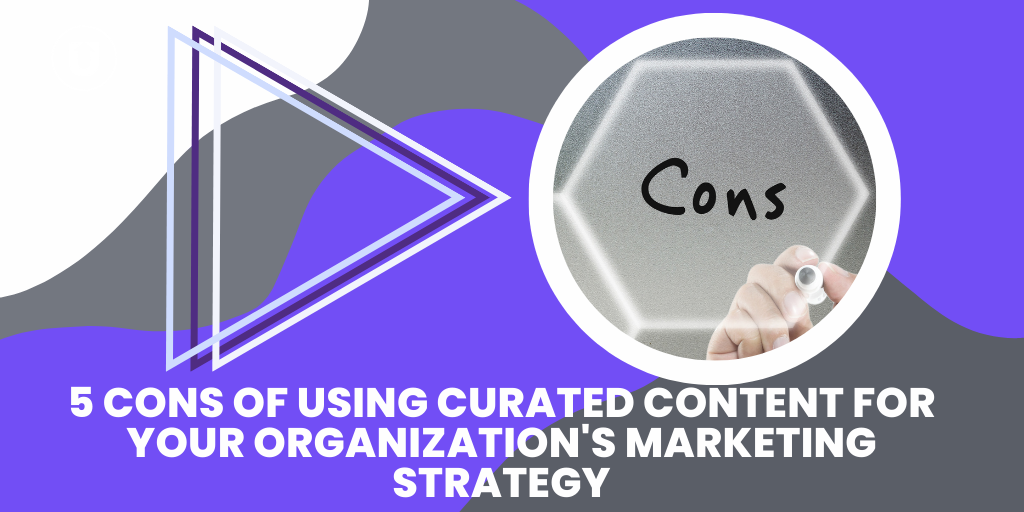9 Common Misconceptions about Content Curation
If you’ve spent any time in the content marketing space recently, you’re probably well aware that content curation is a major topic of conversation.
It appears that most people fall into one of two camps: either you’re totally gung-ho about content curation or you think content curation is killing the industry.
At UpContent, we believe that, when done effectively, content curation can be a critical component to your social media strategy and help build stronger connections with your audience, but we also recognize that curation has earned a bit of a bad reputation over the past few years, a result of common misconceptions.
Let’s debunk these common misconceptions about content curation, so that you can make an informed decision about how it best fits into your workflow:
Misconception #1: Content curation is a replacement for interaction and engagement.
When you go through the process of discovering and curating content, it’s tempting to fill up your social media feeds with third-party content and then stop there.
After all, it takes time and effort to carefully select interesting and relevant content that your audience will love. However, sharing a lot of links is not an excuse for opting out of conversations with your audience.
Instead, use curated content as a springboard for new discussions and interactions that support your own original content and align with your brand values.
Misconception #2: Content curation is a one-size-fits-all method.
Sure, we could give you all of our advice, tips, and tricks on how to implement content curation into your strategy.
We could even tell you the ratio of how often you should share third-party content vs. created content.
But the truth is, every curation strategy is unique. Just because one successful brand is sharing curated content one way does not mean that it’s the right formula for your brand. Take these suggestions in stride, test, and implement what works best for your brand’s goals.
Tip: Whatever does work best, however, make sure you’re being consistent with it.
Misconception #3: Content curation is lazy and easy.
There’s a difference between sharing content and curating content.
Haphazardly sharing random articles or videos or blog posts or just reposting links or letting a machine make all of the decisions IS lazy.
And it’s probably pretty ineffective, too. Curation, however, is an active process. It requires work, even if you automate parts of the flow.
Misconception #4: Content curation requires a lot of time and effort.
With the right workflow and tools, curation also doesn’t have to take up your entire day or week.
In fact, using a tool specifically for discovering relevant content like UpContent can reduce your time spent by 75%.
You can also attribute this time spent curating into your allotted research, ideation, and professional development time, as you are simultaneously learning, evaluating, and brainstorming as you discover content.
Misconception #5: Content curation is automated.
To be clear, the actual delivering of curated content can certainly be automated! (We love and use Buffer and Hootsuite!)
But no truly effective curated content can be selected by a machine (at least not yet; we’ll give machine learning the benefit of the doubt here).
Here’s why: curating requires analysis and evaluation, with consideration to human nuances and interests and context.
Bringing the human element into curation ensures that content remains purposeful and intentional, instead of just adding to the noise. People don’t want more content, they just want more relevant content.
Misconception #6: Content curation is unethical.
Stealing someone else’s work and claiming it as your own is unethical. Sharing and using great content as support and giving credit where credit is due is totally ethical.
Bonus points if you ask for permission to share with your audience, especially in a larger work such as a blog post or presentation (hey–they might be interested in checking it out now!).
Misconception #7: Content curation is an SEO killer.
Remember, curated content is not duplicated content. When you link to the original source and provide new context with annotations, Google recognizes this as fresh new content.
Avoid reposting the full-text and curating from the same source multiple times, and make sure you retitle any curated posts. With any luck, curated content may actually boost your SEO, through more frequent updates and possible links back to your site from the original author.
Misconception #8: Content curation is about sharing viral content from the most popular sources.
Curating content doesn’t mean you need to share what’s trending or what’s already being shared by everyone else.
Doing so just adds to content overload. Instead, set yourself apart and curate the lesser-known sources that add more value to the conversation or support your brand’s goals even better.
Misconception #9: Content curation is driving your audience away to your competitors.
It seems a little backwards to be sending traffic away from your site, but in actuality, curating helpful, relevant resources can demonstrate your commitment to your community’s needs and interests.
Instead of spending hours finding that content on their own, you’re offering a tailored service just for them and they will associate the quality of that content with you, the brand that served it to them.
This consistent well of information will position you as a trusted, go-to expert.



